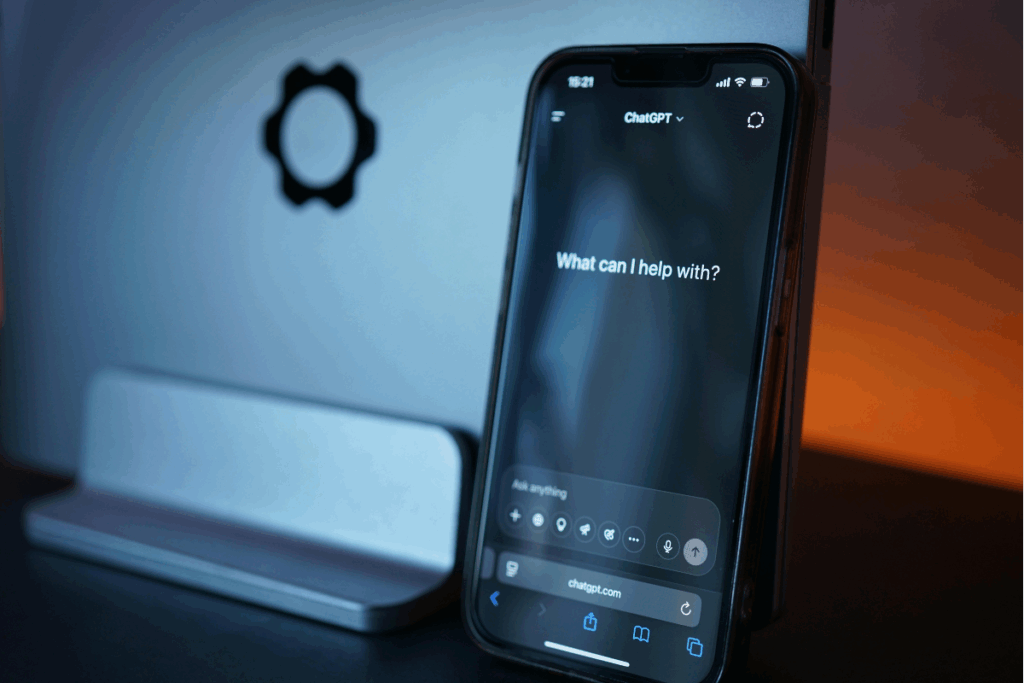In the rapidly evolving landscape of artificial intelligence, tools like ChatGPT have become indispensable for millions of users worldwide.
From powering intricate coding projects and assisting with educational materials to drafting creative content and streamlining business workflows, this AI platform has integrated itself deeply into the fabric of modern productivity. However, its immense utility comes with a significant reliance, and recent events have cast a shadow over its dependability. On the morning of June 26, 2025, ChatGPT experienced its second major outage in a single month, leaving a vast user base in disarray.
This latest disruption, which lasted for nearly an hour, saw users across Europe unable to access the platform. Prompts failed to load, responses lagged, and the seamless digital workflow that countless individuals and organizations depend on stalled without warning. This incident follows closely on the heels of a far more severe outage just two weeks prior, on June 10th, when OpenAI’s systems suffered a prolonged 10-hour disruption.
That earlier event impacted not only ChatGPT but also its vital API services and the recently launched Sora interface. Together, these two significant incidents in rapid succession are raising serious concerns about the reliability of one of the world’s most widely used AI tools. Such failures, even if brief, underscore how deeply integrated these AI systems are into daily work, search habits, and decision-making processes. While a few minutes of downtime might seem minor, the cumulative effect of frequent disruptions can severely erode the trust that users place in a critical piece of digital infrastructure.
The Scope of the Problem: A Widespread Outage
The recent ChatGPT outage was not an isolated hiccup for a few users but a widespread disruption affecting core services across the platform.
Identifying the Failure: Reports and Confirmation
The latest service disruption for ChatGPT began shortly after 10:00 a.m. Central European Time (CET) on June 26th. Almost immediately, reports of widespread inaccessibility flooded various online channels. Users across numerous countries in Europe found themselves unable to perform even basic functions on the platform. This included the inability to load prompts for new queries or access existing chats. For many, the entire interface was simply unresponsive, displaying error messages or endlessly loading screens.
The scale of the problem was quickly confirmed by independent monitoring services. DownDetector, a popular platform that tracks service outages in real-time, recorded a significant spike in complaints related to OpenAI’s services. Concurrently, other verification platforms, such as DownforEveryoneOrJustMe, independently confirmed the widespread nature of the outages.
These tools aggregate user reports and perform checks to determine if a service is truly inaccessible to a broad audience, providing immediate validation of the disruption. The rapid accumulation of these reports painted a clear picture: ChatGPT was, once again, facing a significant service interruption affecting a large portion of its user base. This swift confirmation across multiple sources highlighted the extensive reach of the problem and the immediate impact it had on users’ daily activities.
Full Service Disruption Across OpenAI’s Ecosystem
The June 26th outage was not limited to just the consumer-facing ChatGPT chatbot. It represented a full-service disruption that impacted the entire spectrum of OpenAI’s core offerings. Both free and paid accounts for ChatGPT experienced identical errors, indicating a fundamental issue within the underlying infrastructure rather than a problem confined to specific user tiers. Crucially, the disruption also extended to other vital components of the OpenAI ecosystem.
The recently launched Sora, OpenAI’s cutting-edge visual interface tool, was also affected, returning errors during the same problematic window. This indicates that the problem was not isolated to text generation but impacted broader AI model functionalities.
Even more significantly for businesses and developers, the developer API (Application Programming Interface) for OpenAI’s services also went down. This API is the backbone for countless applications, services, and companies that integrate OpenAI’s powerful AI models directly into their own systems. When the API fails, it means that all these downstream services also cease to function, causing cascading failures across various industries.
For many users, across all these different interfaces and integration points, the tool was, once again, completely unreachable. OpenAI officially acknowledged the incident via its official status page, noting “elevated error rates” across its core services. While the functionality thankfully returned within an hour, the company did not provide any detailed public explanation of the cause for this specific disruption. This lack of transparency, a recurring theme in recent outages, has become a point of growing concern for a user base that relies heavily on these critical AI services.
A Pattern of Unexplained Disruptions: The Trust Deficit
The recent outages are not isolated incidents but part of a concerning pattern that is beginning to erode user trust, particularly due to a lack of transparency.
Two Outages in Rapid Succession: A Troubling Trend
The latest disruption on June 26th is particularly noteworthy because it marks the second major outage in a single month for ChatGPT. This frequency is what truly raises alarm bells among users and industry observers. Just a little over two weeks earlier, on June 10, 2025, ChatGPT experienced what was, until then, its most severe service interruption. That incident saw the platform become completely inaccessible for nearly 10 hours. This was a significantly prolonged period of downtime, far exceeding the brief hiccup of the most recent outage.
The June 10th disruption had even broader consequences, affecting not only regular users trying to access the chatbot directly but also a vast array of companies integrating OpenAI’s tools into their own systems through the API. Businesses ranging from small startups to large enterprises found their operations halted, as their applications and services reliant on OpenAI’s backend simply ceased to function.
That disruption, like the most recent one, also extended to Sora, impacting its visual interface capabilities, and critically, it affected core services used in a wide range of essential functions: content generation, coding, customer support, and education. The recurrence of these outages, particularly one of such significant duration followed by another, highlights a troubling trend that points to underlying stability issues within OpenAI’s infrastructure, prompting serious questions about the long-term reliability of a service that has become a fundamental tool for millions.
The Transparency Gap: Minimal Explanations
A significant factor contributing to the mounting concerns about ChatGPT’s reliability is the lack of transparency surrounding these outages. Both disruptions occurred without much warning, leaving users and businesses scrambling to understand what was happening and when services might resume. In both cases, OpenAI’s public statements were notably minimal. While there was an acknowledgment of the problem on their official status page, the details provided were consistently scarce.
There was no root cause report detailing why the systems went down, nor was there a formal timeline for expected resolution, which leaves users in the dark about when they can expect to resume their work. Crucially, there was also no assurance that similar incidents wouldn’t happen again. For a product that has become deeply embedded in workflows across critical sectors such as education, media, finance, and technology, this consistent lack of transparency leaves a noticeable gap.
Users, especially businesses relying on the API, require a higher level of communication and post-mortem analysis for such mission-critical tools. Without clear explanations and preventative measures, the trust in the service’s stability and OpenAI’s ability to maintain it is inevitably strained. This opacity fosters uncertainty and makes it difficult for users to plan or mitigate the risks associated with such frequent and unexplained downtime.
Wider Impact: AI as Infrastructure and the Call for Resilience
The outages highlight a fundamental shift: ChatGPT is no longer just a chatbot; it’s a critical piece of digital infrastructure, demanding higher standards of reliability and transparency.
Disrupting Modern Workflows
When ChatGPT, or any critical AI tool, experiences an outage, its impact is far more profound than simply a chatbot being unavailable. It now holds active work in limbo, disrupting modern workflows across a multitude of professions. The reliance on this AI is pervasive: developers are troubleshooting code and rely on its suggestions for efficient debugging; teachers are preparing lessons and use it for generating examples or crafting engaging content; writers are mid-article, leveraging it for brainstorming, drafting, or editing; and even marketers are drafting campaigns, relying on AI for content generation and audience analysis.
During the extensive June 10th outage, countless teams were left waiting for systems to resume, with productivity grinding to a halt. Although the most recent disruption on June 26th was shorter in duration, the experience of a sudden, unannounced cessation of service was strikingly familiar. This recurring issue underscores a growing conversation about the resilience of such critical services and the alarming degree to which users have become dependent on a tool that can suddenly shut down with zero to little warning.
The convenience and power of AI have led to its rapid adoption, but this rapid integration also exposes vulnerabilities when the underlying infrastructure falters. The frustration stems from the fact that what was once a supplemental tool has now evolved into an integral part of daily operations, making its absence acutely felt and significantly impactful on productivity and deadlines.
The Demand for AI as Infrastructure
The recurring outages of ChatGPT are forcing a crucial realization: this AI tool is no longer merely a “chatbot”; it has transformed into a production tool, a creative assistant, and a digital colleague. When it suddenly drops offline, it leaves a significant and palpable absence in millions of workflows. Two outages in a single month will likely not cause a mass exodus of users, given the immense value and widespread integration of ChatGPT. However, these incidents serve as a stark and undeniable highlight: if AI truly becomes infrastructure, it must be treated like infrastructure.
This means that companies like OpenAI will be held to higher standards regarding reliability, uptime, and, critically, transparency. Users and businesses now expect it to explain itself, especially when the very architecture of these complex AI systems might inherently involve a degree of “failure into the mind,” given their nascent stage of development and scale.
Tools that millions depend on cannot simply vanish without explanation. And when they do, they cannot return without a reason or, at the very least, a clear post-mortem analysis and a commitment to preventative measures. For some users, these outages are a direct demand for the company to prioritize the stability and robustness of these tools above all else.
For others, the lesson learned is pragmatic: to diversify their reliance on AI tools and services, creating contingency plans in case a similar situation arises again. The expectation is clear: critical AI infrastructure needs to operate with the same reliability and transparency as other essential utilities, ensuring continuous and predictable service for its vast and dependent user base.
Call for Greater Reliability and Transparency
ChatGPT’s second major outage in June 2025 underscores a growing concern about the reliability of this increasingly indispensable AI tool. These disruptions, particularly the 10-hour shutdown earlier in the month, highlight how deeply ChatGPT has integrated into global workflows, from coding to content creation, making its downtime profoundly impactful.
The lack of detailed public explanations from OpenAI for these incidents further erodes user trust, demanding a higher standard of transparency for what has become a critical piece of digital infrastructure.
As AI transitions from a novel chatbot to a fundamental production tool, the expectation for consistent uptime, clear communication during failures, and robust preventative measures will only intensify. Businesses and individual users alike are learning a valuable lesson: if AI is infrastructure, it must be treated with the same meticulous attention to stability and accountability as any other essential utility.







